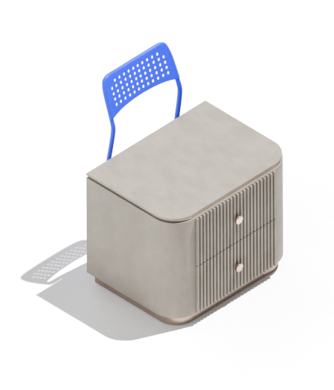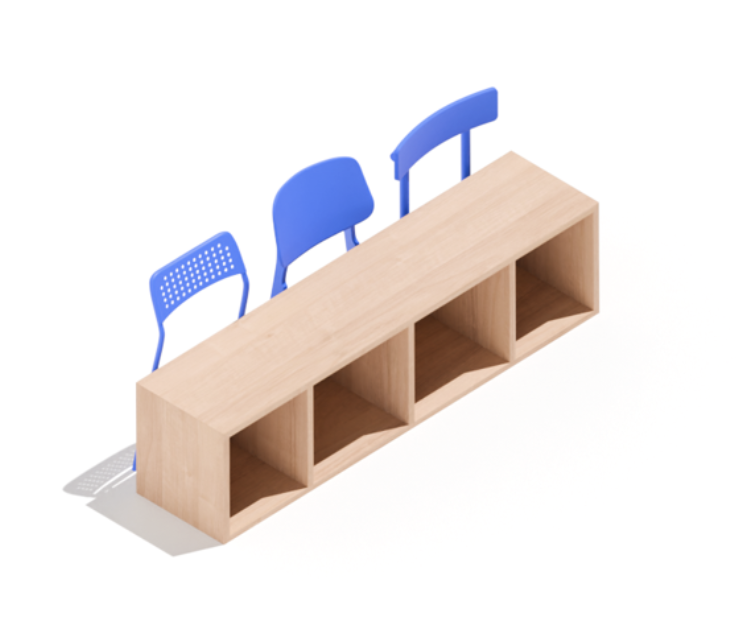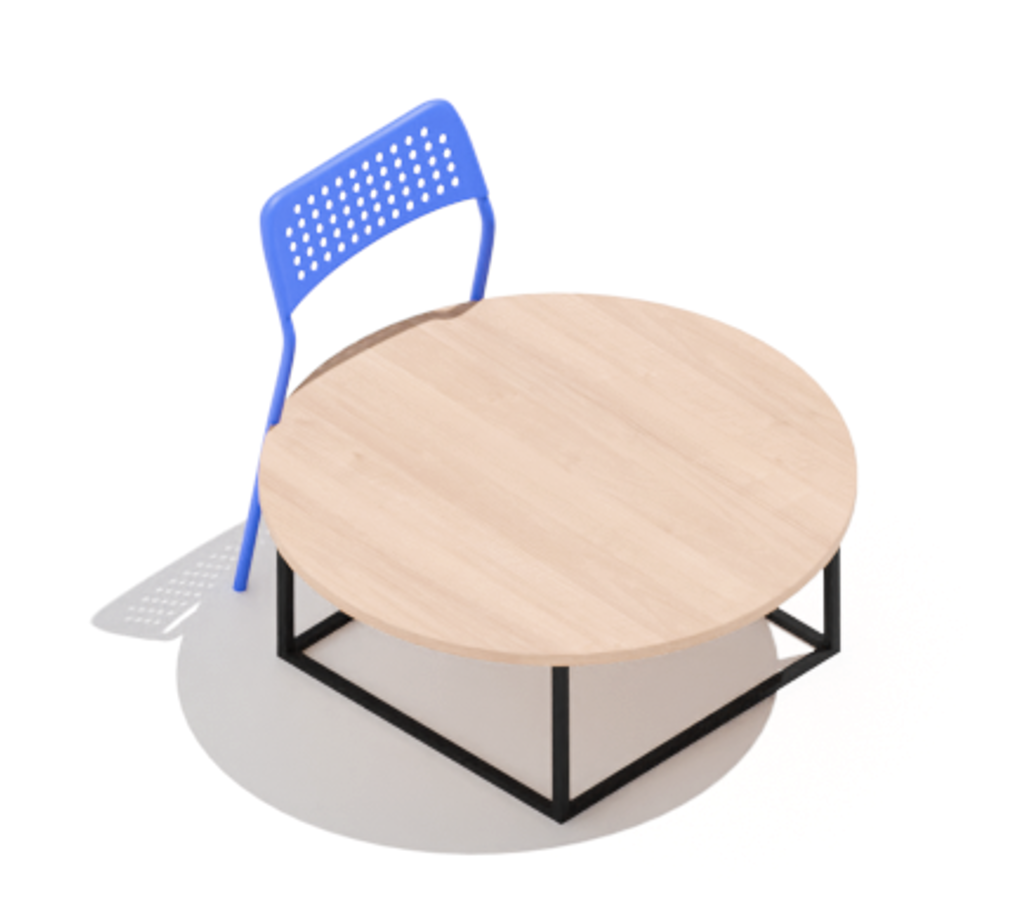
Decoding Blueprint
Decoding Blueprint
Reforming Space Through Furniture
Instructor: Marcos Parga
Media: Digital Rendering
2024
Furniture, from its very inception, has always been conceptualized as an accessory, primarily illustrating how people inhabit a space. When you step into an unfamiliar residential area, it's the furniture that clues you into the function and nature of the domestic space—not the architecture itself. Furniture, therefore, is not merely an element of decor; it serves as the definitive narrator of a space's functionality and livability.









As we delve deeper into the necessity of defining spaces, it becomes apparent that domestic environments often suffer from a certain rigidity. In countries experiencing rapid economic growth, residential spaces often fall victim to a highly expansive economic system, leading to template-like, repetitive housing solutions designed to manage large populations efficiently. This is evident in structures like Berlin's Plattenbau or the towering residential blocks in China's major cities, which are primarily constructed to accommodate vast numbers of people. These buildings offer no additional value to their urban landscapes, serving only as machines for living. Their existence is essential for socioeconomic development, providing a stable and effortless output in a world of constantly changing economic conditions. From an architectural design perspective, they represent a perfunctory approach to design, a cover-up and an excuse for not making any changes to living spaces for decades. So, within this pre-existing living framework, how can we convey a reconsideration of living spaces? In other words, if we cannot change the social structure and the overall framework, and without any political intervention and change, how can we use design to alter people's living spaces?
Domestic spaces become monotonous and are replicated endlessly, leading to a uniformity that stifles any unique residential experience. Within the context of this research, furniture emerges as a critical voice against this homogeneity. It encourages a reevaluation of how residential spaces are perceived and used, challenging conventional views of living spaces and promoting a rethink of their potential and purpose. The project first started with rethinking the design of furniture itself. Looking at the decades affected by modern design, we can see many novel and outstanding redesigns of the definition, style, and form of furniture. This project hopes to not only challenge the living space through formally changing furniture but, more importantly, to serve as a critique, an oath, or a statement against rigid domestic spaces. It's simple but powerful.
Drawing inspiration from several pioneering design initiatives, the project begins with the concept of formal change. Andrea Zittel's "A-Z Living Units" influenced the project's focus on customization and adaptability within confined spaces. By integrating flexible design elements, this project empowers individuals to personalize their living environments, challenging rigid housing typologies and fostering creativity. It serves as a pioneering example of how furniture can act as an active and formally altered critique. Martino Gamper's "100 Chairs in 100 Days" inspired an emphasis on uniqueness and experimentation. Ken Isaacs' "Fun House" introduced elements of playfulness and interactivity, which the project incorporates to transform mundane routines into opportunities for exploration and creativity.
While these examples primarily explore furniture as unique design opportunities, this project aims to go further, treating furniture as a medium for making powerful statements. Drawing on Ettore Sottsass’s Superbox project, the idea emerges that furniture can become a weapon to critique space, creating a strong dialogue with the environment. As Sottsass states, the furniture becomes a Trojan horse in the room, subtly infiltrating and challenging the established norms. This project leverages design not just for aesthetic or functional innovation but as a means to provoke thought, incite dialogue, and inspire change within the domestic sphere. Through this lens, furniture transcends its traditional roles, becoming a potent tool for critique and transformation.
Rather than designing something entirely new from scratch, it is often more effective and practical to build upon what already exists. This project aims to make transformative changes by building upon the original furniture already present in domestic spaces. It serves as a blueprint for a new way of living, decoding the old pieces and deconstructing the long-established rules that have governed these spaces for decades. By adding layers to what people are accustomed to, the project seeks to alter the perception and experience of domestic environments. Through a process of reinterpretation and reconfiguration, this project encourages residents to view their familiar surroundings in a new light, challenging conventional notions and fostering a deeper connection with their living spaces. It isn't just about changing the physical attributes of the furniture but also about provoking thought and encouraging reflection on how these objects shape our daily lives and interactions within the home. By reimagining and repurposing existing pieces, the project promotes sustainability, creativity, and a critical approach to the domestic landscape, demonstrating that meaningful change can arise from within the framework of the familiar.
The project synthesizes these diverse inspirations to offer a comprehensive critique of traditional living spaces. It challenges economic constraints, advocating for a more fluid and imaginative approach to domestic design. By combining modularity, individuality, playfulness, bold aesthetics, and multifunctionality, it redefines the role of furniture as active participants in reconfiguring and reclaiming domesticity. This project stands as a testament to the power of furniture to transform, disrupt, and redefine the spaces we inhabit, pushing the boundaries of conventional home design.